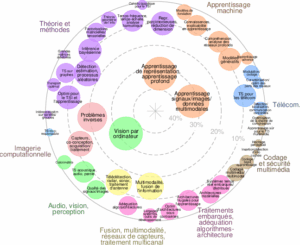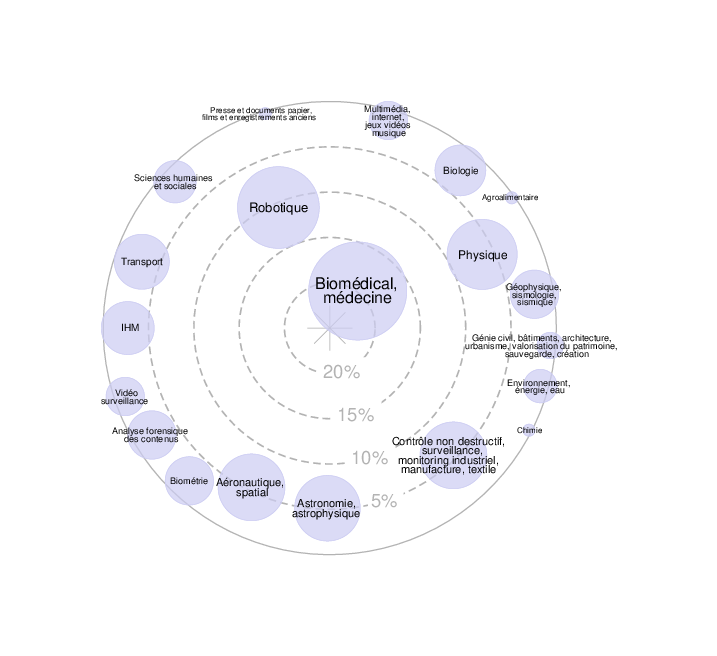Web version: https://www.irisa.fr/phd-subject/2025-01/explainable-multimodal-ai-assessing-dynamic-vulnerabilities-geospatial-data
This doctoral position is offered under the Collaborative Doctoral Partnership (CDP) Programme, a joint initiative of the European Commission’s Joint Research Centre (JRC) and European universities (https://joint-research-centre.ec.europa.eu/collaborateus/collaborative-doctoral-partnership-programme_en).
The programme is designed to train a new generation of researchers at the science–policy interface, strengthening collaboration between academia and EU institutions to support evidence-based policymaking and address pressing societal challenges. More specifically, Université Bretagne Sud has been selected by the JRC among the key international academic partners on the topic Artificial Intelligence for Earth Observation (AI4EO).
The PhD will be jointly hosted by the Disaster Risk Management (DRM) Unit at the JRC (Ispra, Italy) and the OBELIX group within IRISA research institute at Université Bretagne Sud (Vannes, France). This collaboration combines advanced machine learning and remote sensing techniques to address complex issues in disaster risk reduction. The JRC’s Disaster Risk Management Unit plays a central role in supporting EU policies through data-driven risk analytics and leads the development of the Risk Data Hub—a platform for standardized risk, damage, and vulnerability data across Europe (https://drmkc.jrc.ec.europa.eu/). The OBELIX group (https://www.irisa.fr/obelix) is an internationally recognized team in AI4EO, with strong expertise in machine and deep-learning-driven analysis and processing of complex, multidimensional geospatial data, and privileged access to cutting-edge high-performance computing resources at the local and national level. It belongs to IRISA (https://www.irisa.fr/en), one of the largest French research laboratory (more than 850 people) in the field of computer science and information technologies, and it is hosted at Université Bretagne Sud (UBS), a multidisciplinary university located in Vannes, a beautiful medieval city of medium size close to the sea (2h30 in train from Paris). Together, JRC and UBS/IRISA provide a unique interdisciplinary setting where technical innovation is directly connected to policy application.
Scientific challenges and objectives
Vulnerability is defined as the conditions determined by physical, social, economic and environmental factors or processes which increase the susceptibility of an individual, a community, assets or systems to the impacts of hazards. In the context of climate change and the increase of natural hazards, assessing and forecasting vulnerabilities becomes a critical goal. Remote sensing has emerged as a valuable technology for assessing and monitoring the vulnerability of people and infrastructure in the context of disaster risk management, enabling a more proactive approach to mitigating potential impacts.
Indeed, several studies have demonstrated the relevance of remote sensing data to identify high-risk regions and assess the structural integrity of buildings and critical infrastructure before and after disasters strike, to map socio-economic vulnerabilities by cross-referencing physical data with demographic information, or to assess resilience-centred development interventions in local administrative units where socioeconomic survey data are available. The existing studies remain limited in terms of spatial or temporal extent. Artificial Intelligence appears as a promising solution to assess vulnerability at large scale by turning existing massive remote sensing datasets into meaningful insights.
This research project aims to position AI at the forefront of disaster risk management, providing a scalable, automated, and responsive tool for vulnerability assessment using EO data.
Scientific and technical challenges include the desynchronization and heterogeneity of data modalities, the robustness to missing modalities during inference, the high level of performance needed to meet end-user requirements (e.g., 80% accuracy), and the low quantity and quality of labels available to train AI models. Moreover, learning the nuanced concept of vulnerability from available data presents its own set of difficulties.
Working plan
The doctoral project will start in September 2025 and be implemented through 3 working
periods in UBS, France and JRC, Italy:
1) 4-6 months in UBS, Vannes, Vannes (Fall 2025 / Winter 2026)
2) 24 months in JRC, Ispra, Italy (2026, 2027)
3) 6-8 months in UBS, Vannes, France (Spring & Summer 2027)
At the JRC, the candidate will be employed by a Grantholder contract (category 20, indicative gross annual salary, 40.966,56 €, https://ec.europa.eu/jrc/en/working-with-us/jobs/temporarypositions/grantholders/contract-and-working-conditions, see working conditions and salary simulations under contract staff, and JRC grantholder rules under research fellows) in accordance with Grantholder rules and the applicable Vademecum (GH Rules).
At UBS, the candidate will be employed by a temporary contract aligned with the recommended level of remuneration and protection that is offered by the doctoral contract as defined by national regulations (indicative gross annual salary, 27.600,00 €, see https://edmathstic.doctorat-bretagne.fr/en/phd-funding, funding threshold).
The work programme will include the following steps:
1) conceptual understanding and indicator review (study the theory and frameworks underpinning vulnerability in the context of climate change and disaster risk reduction, conduct a comprehensive review of relevant indicators that capture vulnerability effectively);
2) dataset compilation (focus on European datasets due to data availability and relevance to EU decision-makers, collect and compile EO data, including satellite imagery and nightlight imagery, along with textual and tabular datasets for model training);
3) baseline evaluation (establish a baseline performance using existing models and analyse their explainability, develop a data processing and analysis pipeline that integrates AI with EO datasets);
4) development of explainable multimodal AI models (create AI models capable of processing multimodal data (EO, textual, tabular) and providing explainable outputs, perform operational validation of the models to ensure they meet business requirements),
5) integration into a decision-making tool (translate the validated models into a component of a decision-making tool for EU policymakers and responders, contribute to implement a system that can monitor changes in vulnerability indicators, especially following disaster events, to provide real-time insights).
Candidate profile
The offer is restricted to candidates having the nationality of a Member State of the EU or a country associated to the EU Research Framework Programme in force or being resident in an EU Member State since at least five years.
We are seeking an enthusiastic researcher willing to conduct a doctoral project in an international context with mobilities between France and Italy. A MSc degree in remote sensing, computer science, geoinformatics, data science, or a related field is required. The ideal candidate will have a solid foundation in image analysis and machine learning, and a strong interest in disaster risk reduction and the science-policy interface. Experience with deep learning, Python programming, and multidisciplinary collaboration is highly desirable.
Excellent analytical and communication skills, as well as the ability to work across disciplines, are essential. Knowledge of Disaster Risk Concepts and Risk Assessment methodologies would be a plus.
Supervision team
The candidate will be enrolled in a PhD programme in computer science at Université Bretagne Sud (https://www.univ-ubs.fr/en) and MathSTIC – Bretagne Océane doctoral school (https://edmathstic.doctorat-bretagne.fr/en).
Within UBS, the PhD will be co-supervised by Sébastien Lefèvre (Professor at Faculty of Sciences and Engineering Sciences, https://people.irisa.fr/Sebastien.Lefevre/) and Marc Chaumont (Associate Professor at Vannes Institute of Technology). Both are senior researchers within the OBELIX group of IRISA. At JRC, co-supervision will be ensured by
Christina Corbane (Deputy Head of Unit) and Michele Ronco (AI Specialist).
How to apply?
Interested candidates holding, at least, a BSc degree and a MSc degree (by the end of August 2025), should send their application (CV + cover letter + academic transcripts + any relevant supplementary material) before June 25, 2025 (but the sooner the better) to sebastien.lefevre@irisa.fr.
Applications will be processed along the way, and preselected candidates will be offered
interviews with UBS supervisors between May 28 and June 27, 2025. Shortlisted candidates will then be invited for a second interview by the JRC CDP committee between June 30 and July 3, 2025. Final notification will be given early July 2025.
The JRC reserves the right to request additional documents in order to ensure the compliance with all requirements and specific rules applicable to JRC sites. The selected candidate must also be recognized as medically fit to carry out the work activities foreseen. To this end, the candidate must undergo, in advance and independently, the medical checks specified by the JRC.
Bibliography (*: from the supervisors)
Antofie et al. Spatial identification of regions exposed to multi-hazards at the pan-European level. Natural Hazards and Earth System Sciences, 25:287-304, doi: 10.5194/nhess-25-287-2025, 2025 *
Gella et al. Unsupervised domain adaptation for instance segmentation: extracting dwellings in temporary settlements across various geographical settings. IEEE Journal of Selected Topics in Applied Earth Observations and Remote Sensing, 17:1701-1718, doi:10.1109/JSTARS.2023.3336929, 2024 *
Gevaert et al. Auditing Geospatial Datasets for Biases: Using Global Building Datasets for Disaster Risk Management. IEEE Journal of Selected Topics in Applied Earth Observations and Remote Sensing, 17:12579-12590, doi: 10.1109/JSTARS.2024.3422503, 2024
Jarry et al. Predicting Socio-economic Indicator Variations with Satellite Image Time Series and Transformer. BMVC Workshop Workshop on Machine Vision for Earth Observation and Environment Monitoring (MVEO), 2024 *
Sibilia et al. Developing a multi-level european-wide composite indicator to assess vulnerability dynamics across time and space. International Journal of Disaster Risk Reduction, 113:104885, doi: 10.1016/j.ijdrr.2024.104885, 2024 *
Tuia et al. Artificial Intelligence to Advance Earth Observation: A review of models, recent trends, and pathways forward. IEEE Geoscience and Remote Sensing Magazine, doi:10.1109/MGRS.2024.3425961, 2024





